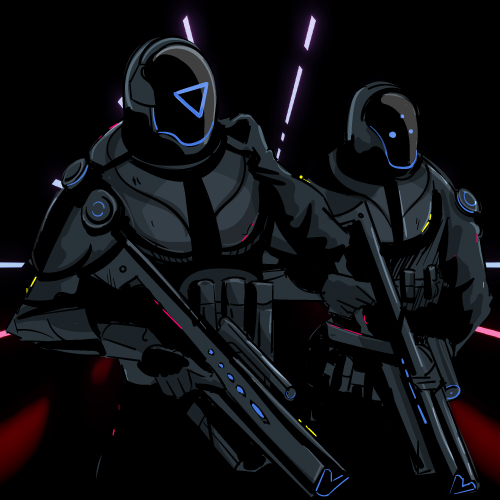Merriam-Webster defines dialogue as a written composition in which two or more characters are represented as conversing. By definition, a dialogue is the representation of a conversion. But the purpose of dialogue in storytelling is so much more.
The beginning of dialogue is exposition. Depending on the point of view you’re writing with, dialogue is a tool to advance the story by sharing necessary information with the reader. But don’t stop there. Well-crafted dialogue is also an excellent way to let your readers get to know your characters. It demonstrates how characters think or feel about things, and it shows your readers how they deal with one another.
People have manners of speech that are unique to them. They translate their thoughts into sentences in a certain way. They may use specific words or types of language, or even have verbal tics. Your characters should be the same way. Two people who have been close friends for a long time will tend to share more common language and slang than two people who barely know one another.
Let’s look at some example dialogue.

“I can’t believe we’re already at this shit again.”
The fatigue was evident in Drav’s voice, even if Jaze couldn’t see it in his comrade’s face. “Please don’t start, Drav. We’re here. There’s nothing else to do but finish this.”
Drav let out a wicked snort. “Don’t you fucking start, Jaze. I told you last time I was out. But then you go and fucking pull me right back in.”
“Out?” Jaze turned to look his friend square in the eye. “You know goddamn well it don’t work like that,” he spat, punctuating each word with a finger poke in Drav’s chest. “Now shut the fuck up and get busy.”
In the scene above, I’ve included the actual words being spoken, the expressions made and actions taken, as well as the thoughts and impressions of the POV character, Jaze. I wrote the scene in a third-person limited perspective, meaning that the reader has the benefit of seeing everything happening from an outside perspective, as well as the opportunity to hear one character’s inner dialogue.
Let’s break it down.
The first line is Drav’s, but the reader doesn’t learn that until the next line. I didn’t use a dialogue tag, but I didn’t need to, because Jaze’s inner dialogue lets the reader know. It also tells the reader something about how Draz spoke the line. He was so tired it was “evident in his voice.” That sentence does a lot of heavy lifting. With it, the reader learns how Drav is feeling, that Drav and Jaze are companions of some kind, and that Jaze isn’t looking at Drav.
Compare the first two lines of dialogue. In Drav’s opening line, he swore. But Jaze didn’t. Between the two lines, the reader understands that Draz either uses colorful language regularly, or is in a state of mind to do so. In contrast, Jaze responds with more careful, less colorful language. Already, the reader gets a picture of the characters, and we’re only two paragraphs in.
Before Draz even responds, he reacts with a snort. This is an action line. I used it in place of a dialogue tag to bring some physical motion into the scene. This writing style comes naturally to me, since most of my initial narrative writing experience comes from writing theater and film scripts. Those are the ultimate “show, don’t tell” media, since you’d have to resort to gimmicky tricks like voice-overs to hear what a character is thinking. But it also punches up the writing. What could be a staid, dull exchange between one character who doesn’t want to do something, and another who’s trying to talk him into it, is instead a darker, gritty scene.
In the next paragraph, I do use a dialogue tag. Sometimes, they’re necessary. But they can be clunky, interrupting the dialogue’s flow, and breaking the reader’s immersion. My habit is to use them sparingly, and instead, especially when it can be unclear who is speaking, using action statements in their place.
Dialogue tags aren’t inherently evil. But they can be monotonous, especially if it’s a chorus of he said, she said, they said. In this exchange, I didn’t use “said.” Instead, I chose “spat,” and added the action of Jaze poking his finger into Draz’s chest to emphasize what he’s saying. The word “spat” characterizes Jaze’s tone, too, which adds some depth to the line. Because of that, and the language Jaze used, it should be clear that whatever calm Jaze had in his first line is gone.
Some writers will forgo dialogue tags altogether, but, when there aren’t any other ways to identify the speaker beyond recalling the order of when each character speaks, it can be just as challenging to follow a long exchange. As a reader, this breaks my immersion far more than using tags does.
Because I tend to write dialogue from a script writer’s perspective, I tend to imagine a scene as if it were in a movie or play, and how I would direct each of the characters in a scene.
The dialogue in this scene is nice and snappy. Each character’s line is short, mainly one or two sentences, mirroring how a real-life conversation between people might occur. Most people don’t speak in long, expositional speeches. Even the ones that do will often stop and confirm that their listeners are still paying attention.
A great way to test out your dialogue flow is to turn it into actual dialogue by reading it aloud. Nothing will bring light to any flaws in the written dialogue as much as hearing it spoken out loud.
Writing good dialogue doesn’t have to be hard. Like everything else with writing, it takes some thought, and lots of practice.
